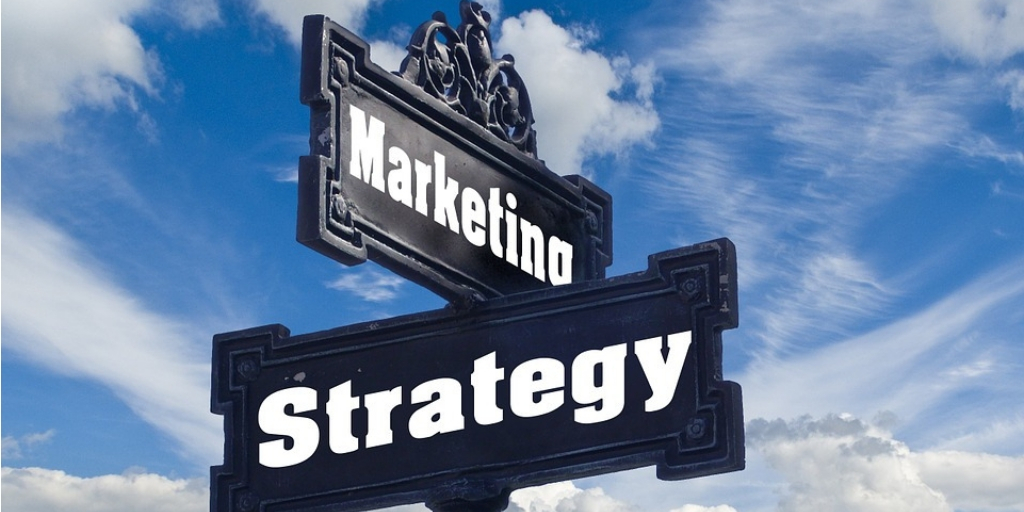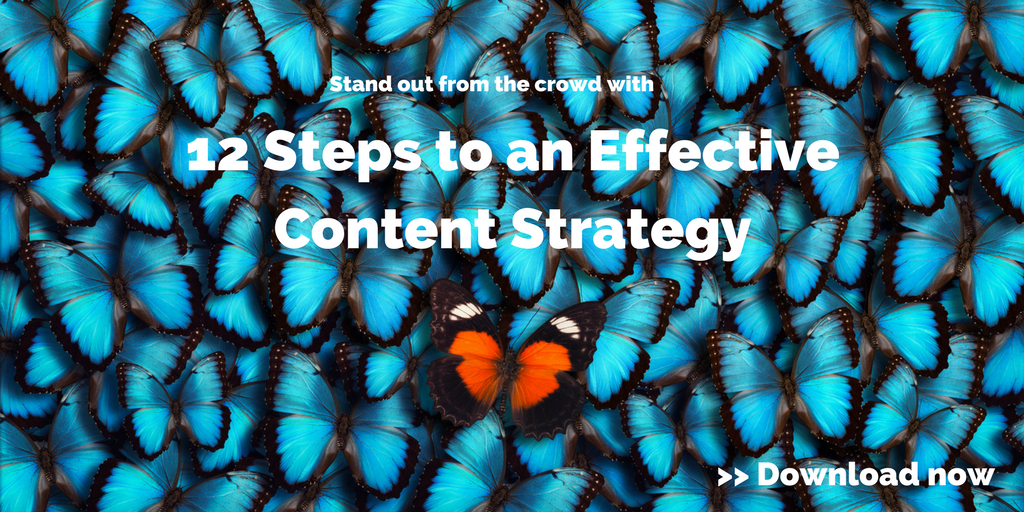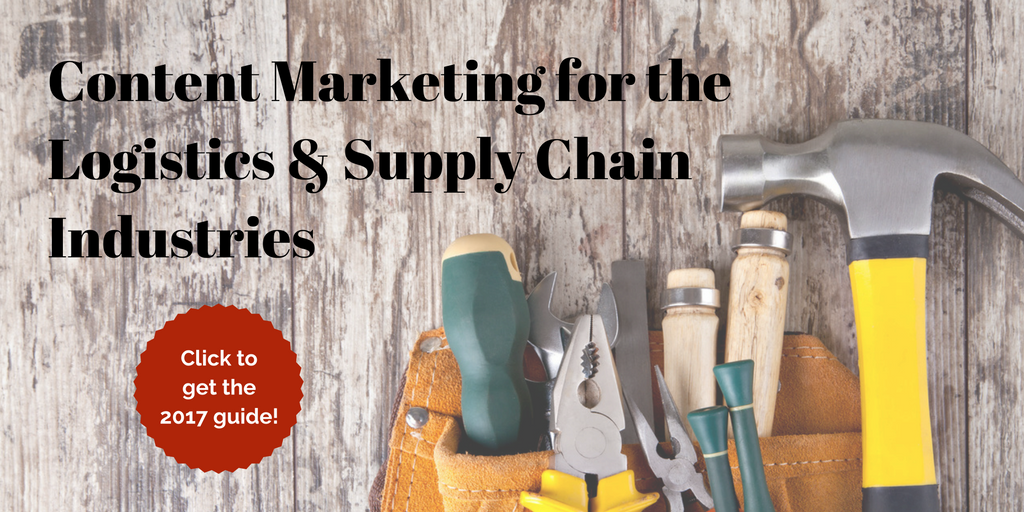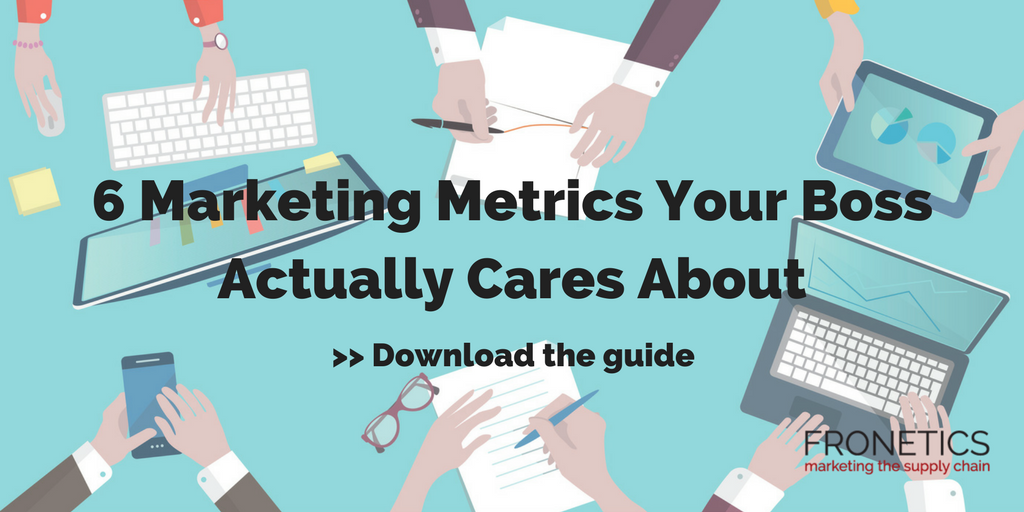
by Fronetics | Oct 24, 2018 | Blog, Content Marketing, Logistics, Marketing, Social Media, Supply Chain
Brands need to focus on the awareness and consideration stages of the buyer’s journey to build relationships and boost social media ROI.
Are you focusing on the right phases of the buyer’s journey in your social media strategy? The 2018 Sprout Social Index shows that customers prefer businesses to provide social media content that aids in awareness and consideration, not the end sale.
Misaligned priorities
Sprout Social’s 2018 Index found that users “want brand awareness and consideration stage content from brands on social, but 80% of social marketers are hyper-focused on awareness activities, leaving out the consideration piece of the puzzle.” When brands don’t meet the needs of their audience with consideration stage content, they’re missing out on building relationships and ultimately cutting into social media ROI.
[bctt tweet=”Sprout Social found a great deal of misalignment when it comes to what marketers post versus what consumers want to see on their social media platforms. ” username=”Fronetics”]
Sprout Social found a great deal of misalignment when it comes to what marketers post versus what consumers want to see on their social media platforms. Part of the issue is a failure to define ROI in the most productive way. Thinking about social media’s value in terms of direct attribution leads to a skewed focus on sales, and erodes the effectiveness of brands’ social media efforts. According to Sprout Social, “social’s true value isn’t in direct attribution — it’s in the awareness and consideration stages of the funnel.”
The right kind of content
Despite the misalignment, there is one area of overlap between what marketers focus on and what users want to see: “posts that teach.” Which brings us back to consideration stage content. “If you aren’t already, meet consumers in this sweet spot in the consideration stage,” suggests Sprout Social. This means taking users beyond recognizing your brand and into knowing where your expertise and thought leadership lies.
Educational content is key in the consideration stage. It’s important to remember that this kind of content doesn’t necessarily need to showcase your product to be valuable — it’s all about offering your audience the information and expertise they’re looking for. For B2B businesses, particularly the supply chain, this could mean anything from product demonstrations to think pieces about how to optimize production.
“The most enlightened social marketing strategy integrates awareness and consideration stage content — opening the door with entertainment and inspiration, then carrying audiences across the threshold with education, information about new product offerings, and discounts and sales,” says Sprout Social.
Diversifying focus between awareness and consideration is crucial to getting the most out of your social media efforts. As social networks home in on preserving the social aspects of their platforms, it’s all the more important for brands to align their activities with what users actually want to see, to stay relevant.
Related posts:


by Fronetics | Oct 22, 2018 | Blog, Content Marketing, Logistics, Marketing, Strategy, Supply Chain
Content is your sales team’s best friend. Use these 7 strategies for putting your content to work to convert and retain customers.
As we’ve written about before, content can help your sales team win business. But you need to take a close look at your sales process and be strategic about the times when content would be helpful — as well as the types of content that will successfully assist sales reps in educating and informing prospects. Here’s how content can support sales in each of the 7 stages in the sales cycle:
1) Land the first conversation
First impressions are critically important. Personalized content is ideal for helping sales teams make the most of their initial contact. For example, try initiating contact with a prospect through a live workshop that meets industry-specific needs. Prospects’ first impressions of your business will be that you understand their needs and have the tools and expertise to meet them.
[bctt tweet=”Personalized content is ideal for helping sales teams make the most of their initial contact. For example, try initiating contact with a prospect through a live workshop that meets industry-specific needs. ” username=”Fronetics”]
2) Get past an initial “no”
One of the most significant challenges for a sales team is receiving an initial “no” from a prospect. But with the help of content marketing, sales teams can often get past that initial rejection and turn it around. This is a great time to leverage not just your own content, but that of your prospect. Educate yourself on your prospect’s latest blog posts, and follow up with suggestions for how they can further optimize their content or business practices.
3) Educate them about a problem they didn’t know they have
Cultivating a fruitful relationship with a prospect is the best way to help your sales team land conversions. Content marketing is all about becoming a valuable resource for your prospects and customers, offering them more than just your products and services. As you learn about your prospect’s business, treat it as you would your own—where there are practices that need to be looked at, create a report and suggest fixes.
4) Nurture leads that aren’t quite ready to buy
Once again, the primary function of content marketing is relationship cultivation. Even when a lead isn’t ready to buy, content can help you nurture a relationship. When the time comes, that lead will turn to your business. Send personalized content throughout the customer lifecycle, demonstrating that you understand are ready to meet their needs.
5) Help them make their final decision about vendors
When a prospect is ready to make a decision about what vendor to use, chances are, they’ll go with the company that has demonstrated the most comprehensive understanding of their unique needs and challenges, and a readiness to anticipate and meet them. If you’ve created and shared relevant, personalized content throughout the sales funnel, you’re best positioned to be the vendor of choice.
6) Build lasting relationships with customers
Once a lead has converted, the role of content doesn’t stop. Too often, businesses lose customers by dropping the ball when it comes to nurturing ongoing customer relationships. Keep customers loyal by sharing personalized case studies, videos, and infographics even after they’ve chosen your business, demonstrating your ongoing commitment.
7) Turn customers into brand evangelists
So, your content has helped your sales team generate a lead, convert that prospect, and build a lasting relationship. What more can it possibly do? With ongoing cultivation, your customers can become brand ambassadors. But to make sure they are effective, you need to equip your most loyal customers with the tools they need to spread the word about your business. Referral incentives, shareable social media content, and guest blogging opportunities are just a few ways to turn customers into evangelists for your brand.
Related posts:


by Elizabeth Hines | Oct 18, 2018 | Blog, Content Marketing, Logistics, Marketing, Strategy, Supply Chain
The supply chain is increasingly seeing the value of moving to an inbound marketing strategy. Here’s what’s at the core of the change to inbound marketing.
Traditional marketing in the supply chain uses an outbound strategy. We’ve all done it. Taking out ads in trade publications. Sending direct mailings. Cold calling.
These types of approaches fight to get your brand name in front of prospective customers, hoping to get a marketing message that resonates in front of the right person at the right time.
Inbound marketing is different
Inbound marketing is different. It’s, well, confident. It showcases your industry merit rather than trying to convince people of it.
With inbound marketing, you publish relevant, informative content where your audience already is – your website, related social media, and other online industry channels – to add value at every stage of their buyer’s journey.
Prospective customers come to associate your brand with industry expertise. When they are ready to buy, they think of you. That’s an inbound content marketing strategy.
Why the supply chain is shifting to inbound content marketing
The supply chain is increasing seeing the value of moving to an inbound marketing strategy. What’s at the core of the change to inbound marketing?
On a theoretical level, it’s recognizing that your business has more to offer than its primary product or service. This is so very important. You also have a team of extremely knowledgeable industry experts with unique and informed perspectives.
But switching to an inbound content marketing strategy is also about recognizing that your customers want much more from you than just your product. The business to busienss (BtB) buying climate is growing longer and more complex, and customers today are demanding value outside the sales funnel. Traditional outbound marketing accomplishes neither of these.
[bctt tweet=”Switching to an inbound content marketing strategy is about recognizing that your customers want more from you than just your product. Customers today are demanding value outside the sales funnel. ” username=”Fronetics”]
Why inbound marketing is better for the supply chain
If that didn’t convince you, put simply, inbound content marketing is just more effective for four main reasons:
- Cost. Inbound marketing is typically less expensive than outbound. Hubspot reports that each sales lead costs approximately 61% less for organizations that employ an inbound strategy versus those that focus on outbound marketing.
- Measurability. Measuring your success with inbound marketing is considerably easier. For example, you’ll never know how many people saw your billboard, but you can measure exactly how many people read your blog post.
- Longevity. Digital content is often evergreen – meaning it’s forever relevant – and older posts that need an update can be easily optimized. Essentially, content lives forever and continues drive traffic long after you publish it. In fact, at Fronetics, about 80% of our traffic comes from posts that are 6 months old or older.
- Targetability. With inbound marketing, you only expend resources on prospects that are already looking for information about your industry, products, and services, making inbound marketing a much more targeted approach for your lead-nurturing efforts. Less expensive, easier to measure, lasts longer, and represents a more targeted approach? Seems like a no-brainer. But what’s the catch? Well, executing a good inbound content marketing isn’t easy, and it generally takes at least six months to yield results.
Executing a good inbound content marketing strategy
Done well, inbound content marketing is extremely effective. A good content marketing strategy is about understanding the questions and concerns that are particular to your customer base and about offering quality information and analysis that answers those needs.
The role of content in the supply chain and logistics industries is to grow brand awareness and customer engagement, increase lead generation and nurturing, and establish your company as an industry thought leader in the minds of your prospective customers.
An inbound marketing strategy helps you become more than just another business to customers. You can become a valuable resource for everything related to your products, services, and industry as a whole. Which is precisely what your potential customers are currently expecting from your supply chain and logistics business.
This post originally appeared on EBN Online.
Related posts:


by Fronetics | Oct 16, 2018 | Blog, Content Marketing, Logistics, Marketing, Social Media, Strategy, Supply Chain
Optimally, content and sales have a symbiotic relationship. But the key is understanding what kind of content your sales team needs to help them close deals.
A theme I’ll be examining in this space over the next few months is how content marketing can help businesses make sales. Content marketing and sales are not mutually exclusive functions. Content can help sales teams get meetings, build relationships, and close deals. So what kinds of content can the marketing staff develop to support sales?
First impressions
Sales reps know that first impressions are a one-time opportunity, and all-important for ushering prospects into the sales funnel. For the initial contact with a prospect, content can be a major asset, particularly personalized content. For example, take the time to familiarize yourself with the latest blog posts from target companies’ websites, and follow up with additional ideas they can leverage.
Additionally, to create a positive first impression, host a live workshop that caters to the needs of your prospects. Hubspot’s Bethany Cartwright suggests an event “that walks through industry best practices and helps troubleshoot common issues.” She also recommends that content marketing teams “build custom landing pages that populate the prospect’s name, company logo, and value props catered to their business needs.”
Turning around an initial rejection
One of the biggest, often insurmountable challenges for a sales team is receiving an initial “no” from a prospect. But with the help of content marketing, sales teams can often get past an initial rejection and turn it around. “Leveraging content doesn’t mean just leveraging your own content,” says Cartwright. “In ‘no’ situations, you can turn the tables and talk to prospects about their content instead.”
[bctt tweet=”The basic idea behind content marketing is that your business’ greatest asset is your knowledge and expertise, not your products and services. ” username=”Fronetics”]
We’ve said it before, and we’ll keep saying it: the basic idea behind content marketing is that your business’ greatest asset is your knowledge and expertise, not your products and services. When it comes to the intersection of content and sales, this idea holds true more than ever. Your best shot at turning around an initial “no” from a prospect is to offer them something of value aside from products. Content helps you build relationships with your prospects, which is your best shot at turning them into customers.
Middle and bottom of the funnel content
Once your sales team has successfully ushered prospects into the sales funnel, the role of content doesn’t go away. At these later stages of the buyer’s journey, content like case studies, implementation guides, and data sheets are of great value. On average, B2B businesses lose around 20% of their customers each year by neglecting customer relationships. These types of content can help cultivate a budding relationship with your prospects, keeping them loyal and engaged.
At these later stages, keep content as visual as possible. This is an ideal time to create and share infographics with your prospects, for example. Video also performs exceptionally well in the late-stage sales cycle. Include short video clips in follow-up emails, particularly video case studies or animated product demonstrations. And don’t forget to keep it personalized. Vidyard is an excellent tool for personalizing video messages to your prospects.
Content, when used effectively, is your sales team’s best friend. Keeping your marketing and sales teams aligned and working closely together is your best bet for generating and nurturing leads, and turning them into customers with a lasting and fruitful relationship.
Related posts:


by Fronetics | Oct 15, 2018 | Blog, Content Marketing, Logistics, Marketing, Strategy, Supply Chain
Content creation requires time, money, and creativity. Here are 6 creative ways to repurposing existing content that will ensure you get the maximum value out of your work.
You could say I’m “scrappy.” My mom always says that I can stretch a dollar farther than anyone she knows. That also applies to my professional life, particularly when it comes to content creation.
[bctt tweet=”Different people consume content in different ways, so really you’re just trying to meet everyone in your audience where they are. ” username=”Fronetics”]
We spend a lot of resources to create content, so I want to use it in as many ways as possible. It’s not cheating. Different people consume content in different ways, so really you’re just trying to meet everyone in your audience where they are. Here are my favorite 6 ways to repurpose content:
1) Turn a webinar into a video tutorial
Webinars are a great way to enhance your reputation as a thought leader since they offer attendees valuable, exclusive knowledge. The downside of webinars is that by nature, they only happen once at a scheduled time. But the content you create doesn’t have to go to waste. By turning your webinar content into a YouTube video you help ensure that your content gets to as many site visitors as possible — and it makes ideal fodder for sharing on your social media channels.
2) Turn blog posts into guides
If you’re posting regular blog content that’s tailored to the needs of your audience, chances are you’ve blogged a lot about a specific topic. Consider consolidating posts within a particular topic into a how-to guide. You may have to update older posts, particularly when it comes to data and specifics, but you don’t have to reinvent the wheel. How-to guides lend themselves particularly well to email marketing.
3) Reframe a key issue
Particularly for think pieces or opinion posts, reframing a topic from a different perspective is an effective way to reuse existing material. For example, a post on how millennials are reshaping the supply chain can be reframed as a set of suggestions for how to attract millennial talent to your company.
4) Turn internal data into a case study
There’s no reason that the data you collect for internal research can’t go to work for you in your content marketing efforts. Use your data to create a case study demonstrating how your products or services made a difference for a client.
5) Turn an interview into an eBook
Have you interviewed an industry expert or one of your executives for a blog post? Interviews are one of the easiest types of content to edit, especially if you conduct them via email. Repackaging an expert interview into an eBook is a snap. Supplement quotes with data and you’ve got a valuable tool for site visitors to download.
6) Use statistics to create an infographic
Infographics are one of the most effective was to disseminate content — and prime candidates for re-sharing on social media. In addition to case studies, infographics are a great way to make use of internal data. Present your research in this compelling format and share it on your social media outlets.
Related posts:










